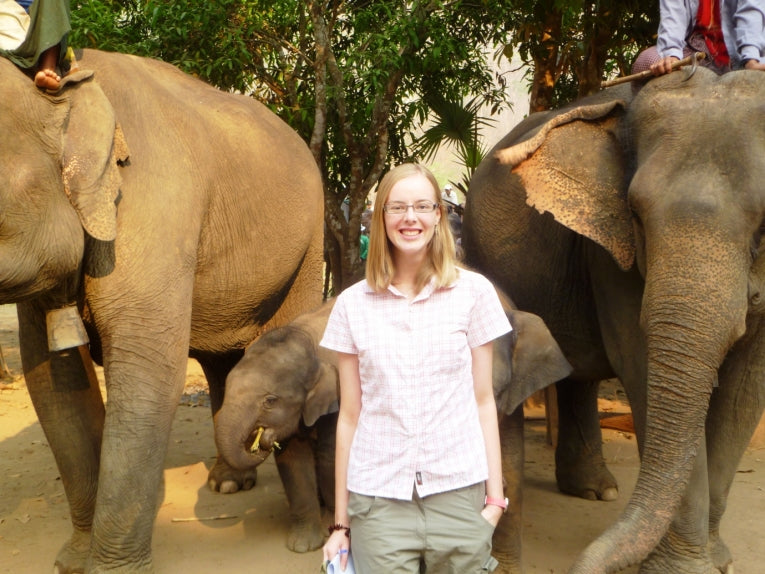We thought they were immune, because they appear to be so resilient. We don't live long enough to remember their previous generations. The result: nobody guessed that baby elephants suffer from small increases in temperature. Large, long-lived and slowly-reproducing animals could be the most dramatically-affected of all by climate change because of their long generation time and the difficulties of body temperature regulation in such organisms.
Hannah S. Mumby, Alexandre Courtiol, Khyne U. Mar, and Virpi Lummaa collaborated on a paper on Myanmar elephants in press in Ecology. It describes how, for elephants between the ages of one month and 17 years, 24°C was optimum for survival. Even lower temperatures were necessary for the maximum possible survival of neonates and mature animals.
Males, in common with many mammals, had lower survival rates, but the differences between genders were quite low. Infection and, most of all, heat-stroke, were the main causes of death in hotter temperature. Here poor health caused decline and non-infectious disease claimed some lives. The wet season was by far the most successful time for the species, with higher survival rates. Unfortunately, the number of months for the monsoon is forecast to decrease.
The crunch comes when average temperatures rise, even by just a small amount - Hannah Mumby from Sheffield University, UK, states, "We think of elephants as very resilient animals, very robust, but then we see at the same time there is a very narrow range at which they are at their optimal survival. If the climate changes by even a few degrees, it can substantially reduce survival." Dry hot months are already the riskiest period for elephants. The calves for example double their mortality risk in the hottest conditions in comparison to the optimum temperature of 24°C.
Previous studies have primarily been on shorter-lived animals, so access to a 40-year database containing the vital stats. of 800 Myanmar elephants was invaluable. It must have been almost like a human diary, month by month as small scale changes magnified. However, while human extinction seems unlikely, the elephant may depend upon our knowledge of the potential problems caused by increasing temperature. Any increase in the number of hot, dry months is likely to cause the extinction of Elephas maximus.
Elephants in Asia are endangered already. The thought that these magnificent creatures, domesticated as these specimens must have been, will fail to survive drought or disease, is beyond imagination. Wild elephants do still exist in SE Asia, so they will possibly suffer even more. Myanmar will have a 0.1 to 0.3°C rise in average temperature within around 30 years, according to accepted figures.
As we know, such numbers have proved to be widely variable, so the inaccuracy of these predictions has to be taken into account. Hannah correctly says that the calves will be unable to mature if they are wiped out during their early years, so that breeding becomes impossible. That seems the crux of the argument. These species of long-lived creature need special consideration, as they have vulnerable times in their lives, despite their apparent, "robustness and resilience."










